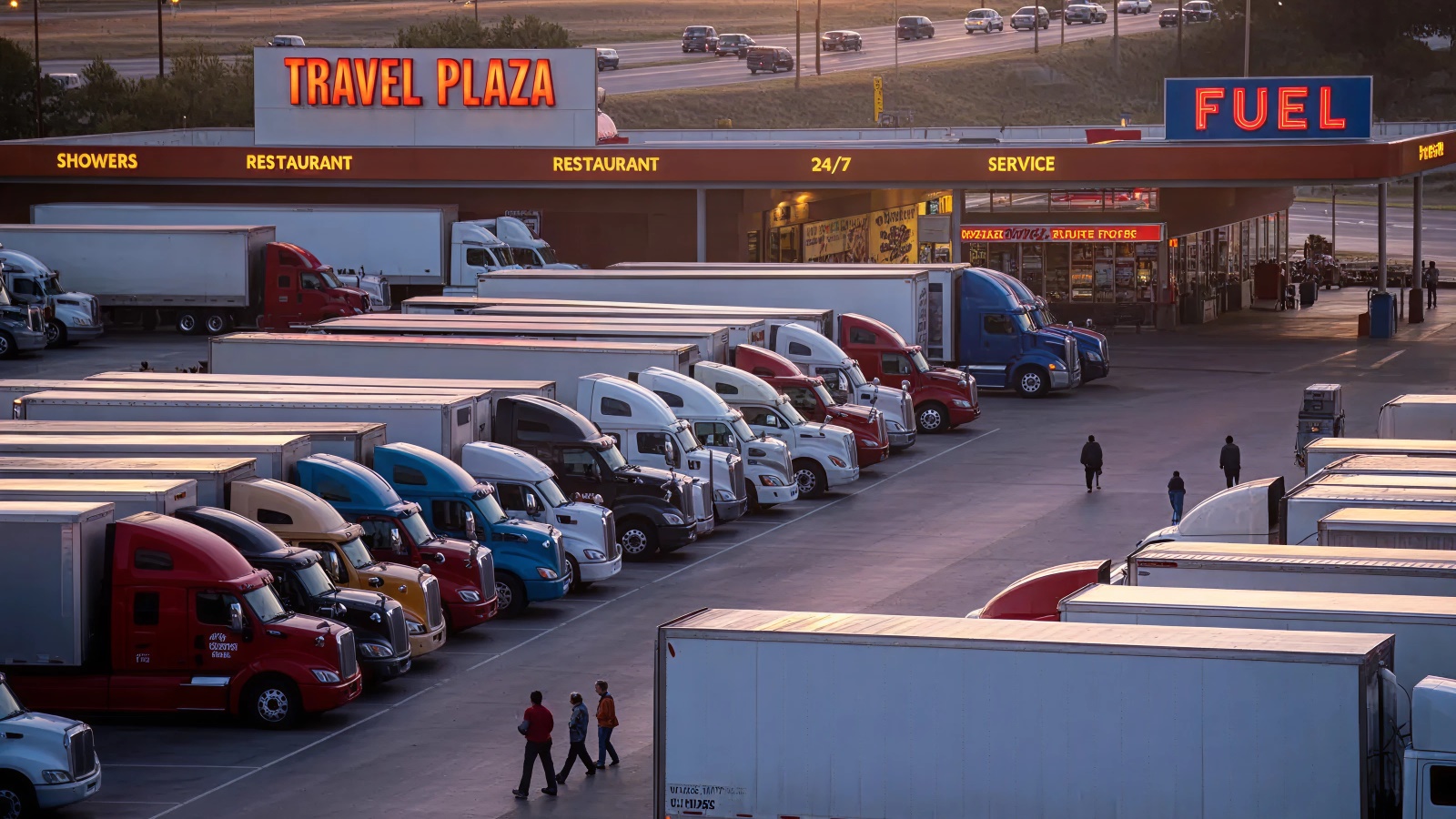A Walk Through America’s Truck Stops: From the Largest to the Worst

There are more than 12,000 truck stops in the U.S., with over 40,000 across North America. That includes everything from full-service travel centers to small, independent fuel stops.
That’s the big picture. But if you’re looking for the one place that sets the standard for what a truck stop can be, there’s no better example than Iowa 80.
The Largest Truck Stop in the U.S.
Out in Walcott, right off Interstate 80, sits Iowa 80. It is the largest truck stop in the United States. This place spans 220 acres, offers 900 truck parking spaces, and includes everything from a trucking museum to a dentist's office.
Inside, drivers find 24 showers, eight restaurants, a movie theater, a pet wash, and even a chiropractor. It is open 24 hours a day and welcomes everyone, not just CDL holders.
You May Also Like: Smart Truck Stop Navigation: Fuel, Parking, and Services for Truckers

Drivers plan their routes around it. Whether someone needs a repair, a hot meal, or just a break from the road, Iowa 80 delivers. Of course, Iowa 80 is in a league of its own. But when it comes to everyday routes in all states, most drivers rely on the big chains that keep the interstate humming.
What Are the Major Truck Stops?
Beyond Iowa 80, the big names are easy to spot. Pilot Flying J, Love’s Travel Stops, and TA-Petro dominate the interstate. These chains operate thousands of locations across the country, and they’re built for volume. You’ll find them at major junctions, fuel corridors, and freight-heavy routes like I-10, I-40, I-80, and I-95.
Most of these stops are open 24 hours and offer consistent access to diesel fuel, food, and parking. They’re designed to keep drivers moving, with amenities like:
- Clean showers and restrooms.
- Laundry facilities.
- Truck repair bays and tire centers.
- CAT scales and DEF pumps.
- Reserved truck parking options.
- Loyalty programs and fuel discounts.
These major chains are spread across the country, but some states offer far more options than others. If you’re planning a route or looking for places to stop, it helps to know where the highest concentration of truck stops can be found.
What State Has the Most Truck Stops?
Texas has the most truck stops in the country. According to 2025 data from poidata.io, Texas makes up approximately 9.6% of all Truck stops in the United States, with 862 total locations.
That includes major chains like Love’s, Pilot Flying J, and TA-Petro, as well as local stops scattered across the state’s vast highway network.
Other states with high truck stop counts include:
- Georgia, which ranks second nationally with 386 truck stops. Many are clustered around Atlanta and along major freight corridors like I-75, I-85, and I-20.
- Florida, with 355 stops supporting freight movement along I-75, I-95, and I-10. The state’s mix of urban hubs and long-haul routes makes it a key stopover for southeast carriers.
- Louisiana, home to 295 truck stops, many positioned along I-10, I-20, and I-49. These routes connect Gulf Coast ports with inland freight networks, making Louisiana a vital link in southern logistics.
You May Also Like: Where Do Truckers Stop? An Overview of Canada’s Rest Areas

But having more truck stops doesn't always mean better experiences. Some places might look promising from the highway, but once you pull in, the story changes. That’s where things start to fall short.
The Worst Truck Stops in America
Most truck stops do what they’re supposed to. You pull in, fuel up, grab something to eat, maybe take a shower, and get back on the road. But not every stop feels right. Some places give drivers a bad feeling the moment they arrive.
Truckers talk about broken lights, trash piling up, and restrooms that haven’t been cleaned in days. Parking lots feel sketchy. Security is nowhere to be found. These are the kinds of stops that show up again and again in driver forums, review apps, and public rankings. Not because they’re busy, but because they consistently fall short.
This isn’t about one bad experience. It’s about patterns. When enough drivers say the same thing, it’s worth paying attention. One driver even took it a step further and shared his own ranking of truck stop brands, from the worst to the best.
You May Also Like: Food & Restaurants: Grab a Bite with the Trucker Guide
So plan, trust the tools, and listen to the drivers who’ve been there. The road is long, but the right stop can make it a little easier.












